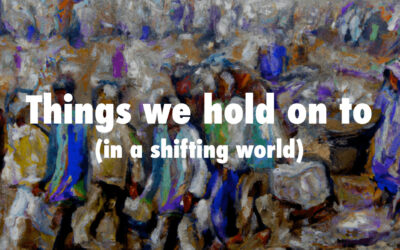I had recently posted a video of my talk fall Doctoral Research Forum for the Mary Lou Fulton Teachers College on the ASU West campus. As I had written in my post, “I thought it best to speak about the role of theory in research. This is something that troubles graduate students a lot as they move through the program (and I have posted about it earlier here and here). I contextualized the discussion within the history of the work that Matt Koehler and I did in developing the TPACK framework.”
Following the post, I received a lovely email from Judi Harris complimenting me on the talk, but also pointing out few gaps in the story that I had told. With her permission, for the sake of getting the story right, I am including relevant excerpts from her email (with some comments/responses from me embedded in between. This would also be the right moment to thank Judi for her service to the broader scholarly community – through her work with the TPACK newsletter (issues archived here) and the TPACK sig. TPACK would not have been as influential without her unstinting efforts. Her email and my responses below:
To: Punya Mishra <punya.mishra@asu.edu>
From: Judi Harris <judi.harris@wm.edu>
<snip>
I just watched the ‘story of TPACK video,’ and will be including it in the next TPACK newsletter, which is going out in the next few days. Thanks for sharing it publicly. I especially appreciated how you related TPACK’s story to the use of theory in research and practice, in a way that I’ll bet seemed so much more REAL to the doc students in the audience than how they typically encounter theory – as a requirement, and often (unfortunately) as square peg that they have to fit into the round hole of their research designs. The graphics in your slides, also – as always! – were awesome. There are a few updates that can be made to the slides, though, if you have interest in making some edits, especially if you are planning to use parts of them in future presentations:
My response: This video was created from a recorded talk, with the slides synched based on what I had said on that day. So I am not sure how I can incorporate these changes into the talk/slides. What I can do, is to include your corrections on my website. That way, we have a public record of these gaps – and it would give me the right information to include if I am ever called on to do this again
At about 5:25” in the video, when you show the TPACK Tree, there isn’t a branch for Angeli & Valanides. The original pub of theirs that I usually cite as discussing TPCK is this one: Angeli, C., & Valanides, N. (2005). Pre-service teachers as ICT designers: An instructional design model based on an expanded view of pedagogical content knowledge. Journal of Computer-Assisted Learning, 21 (4), 292–302.
My response: This was an inadvertent lapse and one that I regret. The Angeli & Valanides work is a key precursor and I should have included it.
At about 14:25” in the video, when you start to describe how TPCK became TPACK, there is no mention of the 9th Annual National Technology Leadership Summit in 2007 (which you and Matt attended; I was there, too), which was focused upon TPCK. At that meeting, Glen Bull introduced an agenda item to find a more pronounceable acronym for TPCK. Glen was the one who set aside time for the friendly competition in which we all participated to create a more pronounceable acronym, then voted on the different possibilities that were generated. TPACK was the winner. Its originator was a woman whose name I forgot, unfortunately, (maybe it was “Leslie?’), but she was from the corporate sector (maybe from Canon?), and she was the one who said that TPACK is appropriate because it represents the “Total PACKage.” I found it especially cool that she isn’t a teacher, yet she really ‘grokked’ the meaning and power of the construct, and came up with the ‘total package’ slogan. (The article that you cited in the presentation explained this process briefly in its second and third paragraphs. I’m attaching a copy for your reference. In your presentation, you said that you and Matt changed the name after reading a book about writing grants.)
My response: The $50 grant story about buying a vowel was just a weak attempt at being funny (think Wheel of Fortune) and partly a function of trying to fit a complex story within a 30 minute talk. It was not trying to minimize the role of NTLS, and as you pointed out, the image of the editorial written by Ann Thompson and myself (Breaking News: TPCK becomes TPACK) does speak to the role that Glen and NTLS played in all that. I remember explaining this better in a presentation I had made at AERA which also provided names of many individuals (Ann, Glen, Joel and Judi among others) who were instrumental in making this entire TPACK thing happen.
In case you’d like to update the publication numbers that you cited at about 17:40” (thanks for the citation!), here are the current ones!
Articles: 665
Chapters: 199
Books: 23
Dissertations: 182
TOTAL: 1069
My response: This is awesome (and kind of insane), particularly the 182 dissertations! That truly speaks to influence on the field.
The video in question is embedded below:




0 Comments
Trackbacks/Pingbacks